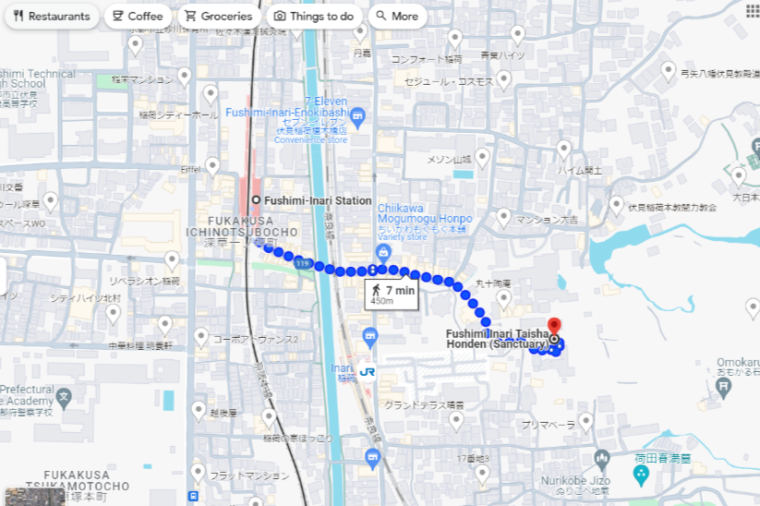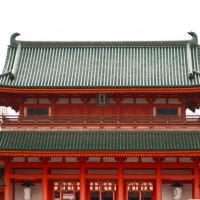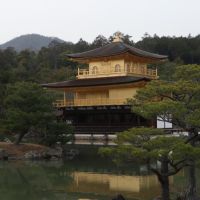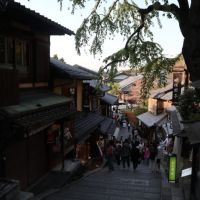Fushimi Inari Taisha: Enchanting Gates to Eternity – History and Travel Guide
S-fleage
S-fleage is a Kyoto-based company. We are proud to introduce the charms of Kyoto to the world. We hope this article will help you to experience Kyoto.
Latest posts by S-fleage (see all)
Fushimi Inari Taisha, nestled in the heart of Kyoto, Japan, stands as a monumental beacon of spiritual significance and breathtaking beauty. This Shinto shrine, famous for its thousands of vermilion torii gates, has captivated the hearts of visitors from around the globe, offering a journey through an enchanting path that bridges the divine and the earthly. This comprehensive guide explores the history, attractions, and practical travel information for those looking to immerse themselves in the mystical allure of Fushimi Inari Taisha.

Contents
- Fushimi Inari Taisha: Wander the Thousand Torii Paths
- The History and Origins of Fushimi Inari Taisha
- Key Attractions and Their Allure
- How to Get to Fushimi Inari Taisha
- Basic Information of Fushimi Inari Taisha
- Tips and Advice for Visitors
- Attractions and Activities in the Vicinity
- Fushimi Inari Taisha, the Place You Should Visit at Least Once in Your Life
Fushimi Inari Taisha: Wander the Thousand Torii Paths

Entering Fushimi Inari Taisha is like stepping into another world, where time slows and the sacred whispers of the past resonate with every step. The shrine’s iconic torii gates, each donated by individuals or businesses hoping to receive blessings, create a visually stunning pathway that winds up the sacred Mount Inari. This pilgrimage route, enveloped in a canopy of trees, offers a serene escape from the bustling city life, inviting visitors to reflect, explore, and discover the spiritual essence of Japan.
伏見稲荷大社 再撮チャレンジ!キーフレームでいい感じになる!#FushimiInari #kyoto#NeRF #LumaAI pic.twitter.com/d1zNCSLZ1Z
— Masked Reality @ xR Complete (@MaskedRealVenom) April 17, 2023
京都 伏見稲荷❣️
Fushimiinari in Kyoto!!#icecream #softcream #sweets #kyoto #japan #fotos #fotografie #torii #fox #happy #fun #伏見稲荷 #京都 #鳥居 #千本鳥居 #vew #beautiful pic.twitter.com/3fqKqsN2Xj— cyao (@cyaorin) May 4, 2018
今日の午前中にちょこっと行った、京都の伏見稲荷神社。
京都行ったら訪れたかったんだよ、この神社〜!Fushimi Inari Shrine in Kyoto. So beautiful. pic.twitter.com/426SargCdB
— まおりん(Maorin)@ADHD&ASD in Japan (@maorinlemon789) July 1, 2016
The official website of Fushimi Inari Taisha
The History and Origins of Fushimi Inari Taisha

Now, let’s take a look at the history and origins of Fushimi Inari Taisha.
Establishment Year and Founder of the Shrine
Fushimi Inari Taisha’s origins date back to the early 8th century(711 AD) when it was established by “Hata no Irogu”, a powerful clan with origins in Korea. The shrine was dedicated to Inari, the Shinto god of rice, agriculture, and prosperity, marking the beginning of its long-standing history as a central place of worship for those seeking bountiful harvests and success in business.
The Significance of the Inari Deity and Fox Symbols

Inari, being the deity of rice and agriculture, holds a pivotal role in Japanese culture, symbolizing not only physical sustenance but also the prosperity of the nation. The fox (kitsune), is considered Inari’s messenger, believed to possess the ability to ward off evil spirits. Throughout the shrine, visitors will encounter numerous fox statues, often holding keys, sheaves of rice, or jewels in their mouths, signifying their role as protectors and bringers of good fortune.
Key Attractions and Their Allure

In addition to the torii gates, the main hall and the surrounding scenery at Fushimi Inari Taisha are breathtakingly beautiful.
The Stories Behind the Thousands of Torii Gates
Each torii gate at Fushimi Inari Taisha tells a story of hope, gratitude, and devotion. Donated by individuals and businesses alike, these gates are inscribed with the names of the donors and the dates of donation, creating a tangible record of prayers and wishes spanning decades. The act of donating a gate is seen as a way to give thanks for Inari’s blessings or to pray for success and prosperity.
Major Shrine Buildings and Prayer Spots
Beyond the torii paths, Fushimi Inari Taisha houses several significant buildings and prayer spots. The main hall (Honden) serves as the primary place of worship, where visitors can pay their respects to Inari. Surrounding it, various auxiliary shrines, each with its unique deity and purpose, offer spaces for more personalized prayers and reflections.
Walking Trails up the Mountain and Their Scenic Views
The walking trails leading up Mount Inari not only offer a spiritual journey but also provide breathtaking views of Kyoto. The ascent, taking approximately 2-3 hours to complete, rewards visitors with panoramic vistas, small waterfalls, and quiet rest areas, making it a perfect blend of spiritual pilgrimage and natural exploration.
How to Get to Fushimi Inari Taisha

There are various means of transportation to get to Fushimi Inari Taisha. However, given the variety of options, navigating to Fushimi Inari Taisha can be somewhat complicated for travelers. Therefore, on this site, we will explain in detail and carefully to prevent travelers from getting lost.
The most convenient way to reach Fushimi Inari Taisha is by train. Access to Fushimi Inari Taisha by train is very convenient from within Kyoto city and the surrounding areas. There are mainly two train lines you can use to reach Fushimi Inari Taisha.
Access from JR Nara Line’s “Inari Station”


https://maps.app.goo.gl/kiE6GexTsqwr2dad9
If you’re using the JR Nara Line, it takes about 5 minutes from Kyoto Station to reach “Inari Station.” Inari Station is the closest station to Fushimi Inari Taisha, with just about a 5-minute walk from the station to the shrine. The JR Nara Line runs from Kyoto Station towards Nara, making it easily accessible not only from within Kyoto city but also from the Osaka area.
Access from Keihan Train’s “Fushimi Inari Station”


https://maps.app.goo.gl/vLG8haZQXMTzV7ni8
If you opt for the Keihan Main Line, disembark at “Fushimi Inari Station.” This station is also very close to Fushimi Inari Taisha, approximately a 10-minute walk away. The Keihan Train offers direct access from central Kyoto and Osaka city (such as Yodoyabashi and Temmabashi), making it a convenient option for sightseeing in Kyoto.
By Bus: Convenient Routes and Tips
Accessing Fushimi Inari Taisha by bus from within Kyoto city is possible, though it might be a bit more complex compared to using the train.
Kyoto City Buses operate numerous routes from key points in the city, including Kyoto Station. The closest bus stops to Fushimi Inari Taisha are “Inari Taisha Mae” or “Fushimi Inari Station Mae,” but only a limited number of routes stop directly at these stops. Direct buses from Kyoto Station to Fushimi Inari Taisha are not frequently available, so it’s crucial to check the bus route maps and timetables in advance to see if transfers are necessary.
Using a Kyoto City Bus one-day pass or a tourist pass can be cost-effective and convenient for navigating around Kyoto city.
Be prepared to walk a bit from the nearest bus stop to Fushimi Inari Taisha when accessing by bus. Also, due to the large number of tourists in recent years, the buses can become very crowded, so planning ahead is advisable to avoid overcrowding.
On Foot: A Scenic Walk to the Shrine
For those located in central Kyoto, a walk to Fushimi Inari Taisha can be a delightful journey, passing through residential neighborhoods and offering glimpses of daily Kyoto life.
Taxi and Ride-Sharing: Quick and Direct Options
Taxis and ride-sharing services provide a direct route to Fushimi Inari Taisha, especially convenient for those traveling in groups or with limited time.
Basic Information of Fushimi Inari Taisha

Here are the basic information about Fushimi Inari Taisha.
Entrance Fee
Fushimi Inari Taisha is open to the public free of charge, inviting all who wish to explore its sacred grounds and pathways.
Business Hours of Fushimi Inari Taisha
The shrine is open 24/7, though the shrine office operates from 8:30 AM to 4:30 PM. The round-the-clock access allows visitors to experience the shrine at any time, including the magical early morning or late evening hours when the paths are less crowded.
Annual Events
Fushimi Inari Taisha hosts several annual events, including the famous Hatsumode (New Year’s visit), where thousands gather to pray for a prosperous year ahead. Other notable events include the Rice Planting Festival in June and the Motomiya-sai in July, celebrating the spirit and history of the shrine.
Tips and Advice for Visitors

It’s also important to consider the season of your visit and dress appropriately for that season.
Best Times and Seasons to Visit
While Fushimi Inari Taisha is a year-round destination, visiting during the early morning or late afternoon can help avoid the crowds. The autumn months, with their cooler weather and changing leaves, offer a particularly enchanting experience.
What to Wear and What to Bring
Comfortable walking shoes are a must, as exploring the shrine involves significant walking. Dressing respectfully is also advised, keeping in mind the sacred nature of the site.
Furthermore, when passing through the Senbon Torii gates and climbing Mount Inari, please note that the paths are cobblestoned, we do not recommend wearing high heels or leather shoes. Especially on rainy days, the paths can become slippery. Therefore, wearing sneakers is recommended.
Attractions and Activities in the Vicinity

Let me introduce you to the activities and attractions you can enjoy at Fushimi Inari Taisha.
Local Dining and Souvenir Shopping Options
Nearby, visitors can enjoy local specialties such as inari sushi and kitsune udon, along with a variety of shops selling souvenirs, crafts, and traditional sweets.
Inari sushi and kitsune udon are both traditional Japanese dishes that feature ingredients symbolically associated with Inari, the Shinto deity of rice, fertility, agriculture, foxes, and industry.

Inari sushi, also known as “Inarizushi,” is a simple and popular type of sushi that consists of sushi rice stuffed into a pocket of seasoned, fried tofu called “abura-age.”

Kitsune udon is a warm noodle soup dish that features thick udon noodles served in a hot broth, typically made from dashi (fish and seaweed stock), soy sauce, and mirin. The “kitsune” (which means “fox” in Japanese) refers to the topping of a piece of sweet and savory simmered abura-age.
https://www.instagram.com/p/BRSKvkyDbSS/?utm_source=ig_web_copy_link&igsh=MzRlODBiNWFlZA==

Additionally, the fox plushies sold at Fushimi Inari Taisha are very cute and popular souvenirs.
Other Nearby Tourist Spots

Kyoto offers countless other attractions, including the bamboo forests of Arashiyama, the historic streets of Gion, and the serene Kiyomizu-dera Temple, all within easy reach from Fushimi Inari Taisha.
Fushimi Inari Taisha, the Place You Should Visit at Least Once in Your Life

Fushimi Inari Taisha is more than just a tourist destination; it’s a spiritual journey that intertwines the natural beauty of Kyoto with the deep-rooted traditions and beliefs of Shintoism. Whether you’re seeking solace, inspiration, or simply the beauty of an ancient culture, Fushimi Inari Taisha offers a unique and unforgettable experience that resonates with the soul.




